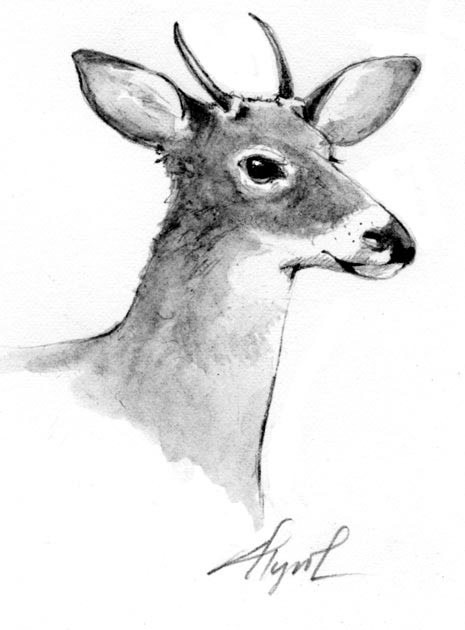
With deer season in full swing, here’s something to ponder: will Vermont’s antler-restriction law (the ban on shooting spikehorns), which was designed to promote larger bucks with bigger antlers, someday lead to smaller bucks with smaller antlers? Some scientific evidence suggests that this might be the case.
Prior to 2005, when the restriction went into effect, just over half of the bucks being shot in Vermont’s fall rifle season were spikehorns – yearling males with straight antlers that don’t fork.
Hunters killed spikehorns disproportionately because young bucks tend to be less savvy than older bucks and because, on a percentage basis, there are more of them. But while it might seem that killing lots of younger bucks would leave more older bucks behind, it doesn’t work out that way since, over time, the only way to have older bucks is to make sure they survive being young.
The lack of bucks meant that the deer herd was increasingly skewed in favor of female deer, as more does were surviving to maturity. This, in turn, was putting a strain on the overall ecosystem, since a doe-heavy herd increases more rapidly than a balanced one. Biologists with Vermont’s Department of Fish and Wildlife were eager to correct the herd imbalance, both to prevent overpopulation and, at the same time, under-population following harsh winters.
Fish and Wildlife officials had a cultural problem to address as well: many hunters prefer to shoot bucks with large antlers, and the relative scarcity of large deer in Vermont meant that those hunters were increasingly hunting elsewhere.
Once the antler restriction was enacted in 2005, biologists quickly began to see the hoped-for results: male deer became more evenly spread out across all ages, the average harvested buck became larger, the herd overall became more resilient and balanced, and more hunters began to see big antlers.
But here’s the rub: antler size is partially hereditary. Some bucks grow bigger antlers than others, given equal access to food. In fact, bucks with the very best genetics can grow multiple-tined antlers starting as yearlings, while their average compatriots are just growing spikes. Research also confirms that the bucks with the largest antlers as yearlings will be the bucks with the largest antlers at every stage of life.
Vermont’s antler-restriction law may, therefore, be inadvertently high-grading the herd: removing the best youngsters and leaving the rest. Your average yearling is protected while your above-average yearling is legal. Fish and Wildlife officials are aware of the potential problem: “The selection for smaller bucks will likely produce an increasing population of smaller bucks in the buck population. This is not a desirable outcome.”
What’s to be done? State biologists in Texas, faced with the same dilemma, have made it legal to shoot both the smallest bucks (spikehorns) and the largest bucks (an antler rack at least 13 inches across), thereby protecting the males that fall in the middle, including the best yearlings.
Other options would be to increase the antler restriction even further, to say three points on one side, or do away with the antler restriction altogether and return to the pre-2005 conditions. But neither of these options favors the best genetics.
Complicating the decision is the fact that antler genetics are passed on equally through bucks and does. This, at the very least, is slowing down the high-grading, since does aren’t being selected based on their nonexistent antlers. Another factor is that Vermont’s rifle season coincides with the peak of the breeding season, not the start of the season. Many of the largest bucks with the largest antlers will have already passed on their genetics earlier in the fall, before rifle season opens.
Then again, the below-average spikehorns that survive mild winters are also passing their genetics on early in the season.
One of the great challenges facing a hunter during deer season is having something to occupy the mind during the long hours of lying in wait. A decent conundrum with no clear answer – such as, how to positively influence the size and genetics of Vermont’s deer herd – is not such a bad thing to have.


Discussion *